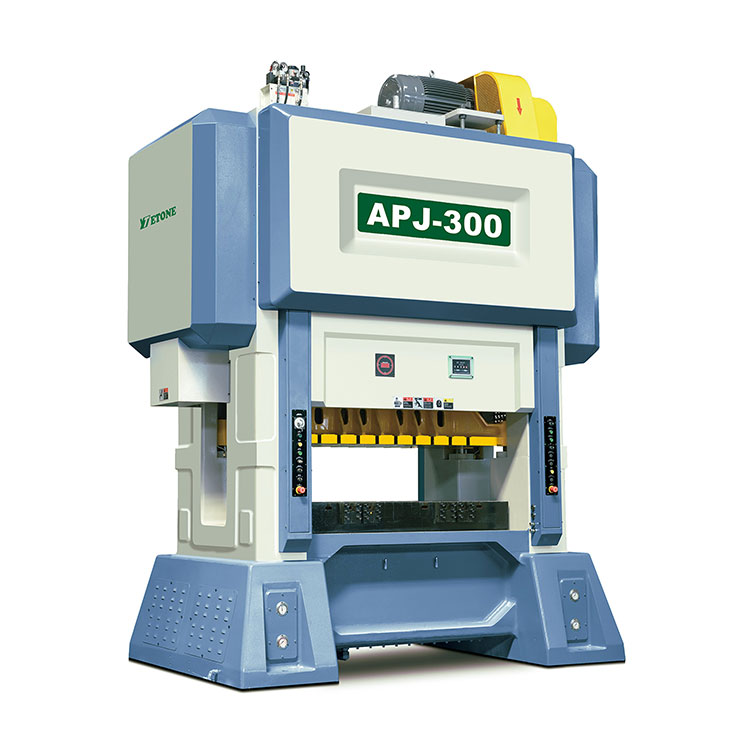The Brief Introduction to High Speed Stamping Press
2023-10-17
A high-speed stamping press is a powerful and efficient machine used in the manufacturing industry for the precise and rapid production of stamped metal components. It is a crucial piece of equipment in industries such as automotive, electronics, aerospace, and appliances, where high-volume production and tight tolerances are essential. In this blog post, we will explore the features, advantages, and applications of high-speed stamping presses.
Features of High-Speed Stamping Presses:
1. Robust Construction: High-speed stamping presses are built with a sturdy frame and heavy-duty components to withstand the high forces and vibrations generated during the stamping process. The construction ensures stability, accuracy, and longevity of the machine.
2. High-Speed Capability: As the name suggests, high-speed stamping presses are designed for rapid production. They can achieve impressive stroke rates, ranging from several hundred to thousands of strokes per minute, significantly increasing production output.
3. Precision and Accuracy: These presses are engineered to deliver precise and consistent results. They incorporate advanced control systems and servo technology to ensure accurate positioning of the tooling and maintain tight tolerances throughout the production process.
4. Quick Die Change: High-speed stamping presses often feature quick die change systems, enabling rapid setup and changeover between different stamping operations. This minimizes downtime and maximizes productivity.
Advantages of High-Speed Stamping Presses:
1. Increased Productivity: The high-speed capability of these presses allows for significantly faster production cycles, resulting in increased productivity and shorter lead times. Manufacturers can meet high-volume demands while maintaining consistent quality standards.
2. Cost Efficiency: The speed and efficiency of high-speed stamping presses translate into cost savings. Higher production rates and reduced cycle times lead to lower labor costs per part, making them economically advantageous for large-scale manufacturing.
3. Improved Quality: The precision and accuracy of high-speed stamping presses ensure consistent quality and dimensional accuracy of stamped components. The machines' advanced control systems minimize variations, reducing the risk of defects and scrap.
4. Versatility: High-speed stamping presses can handle a wide range of materials, including steel, aluminum, copper, and various alloys. They can accommodate different thicknesses and complex part geometries, making them suitable for diverse industry applications.
Applications of High-Speed Stamping Presses:
1. Automotive Industry: High-speed stamping presses are extensively used in the automotive sector for manufacturing components such as brackets, connectors, terminals, and engine parts. The high production rates and precision of these machines support the automotive industry's demand for efficient and reliable parts production.
2. Electronics and Electrical Components: Stamping presses play a vital role in the production of electronic and electrical components, including connectors, contacts, lead frames, and sensor parts. The high-speed capability of these presses allows for the efficient manufacturing of intricate and small-scale components.
3. Consumer Goods: High-speed stamping presses find applications in the production of consumer goods such as appliances, hardware, and furniture components. They enable high-volume production of stamped parts that meet the design specifications and quality requirements of these industries.
4. Aerospace and Defense: The aerospace and defense sectors require precision-engineered components with stringent quality standards. High-speed stamping presses, with their accuracy and speed, are employed in the production of aircraft parts, missile components, and defense-related items.
Conclusion:
High-speed stamping presses are vital machines in modern manufacturing, offering increased productivity, cost efficiency, and high-quality output. Their ability to produce complex and precise stamped components at rapid speeds makes them indispensable in industries requiring high-volume production and tight tolerances. With their robust construction, advanced control systems, and quick die change capabilities, these presses play a significant role in shaping various sectors, including automotive, electronics, consumer goods, and aerospace.



